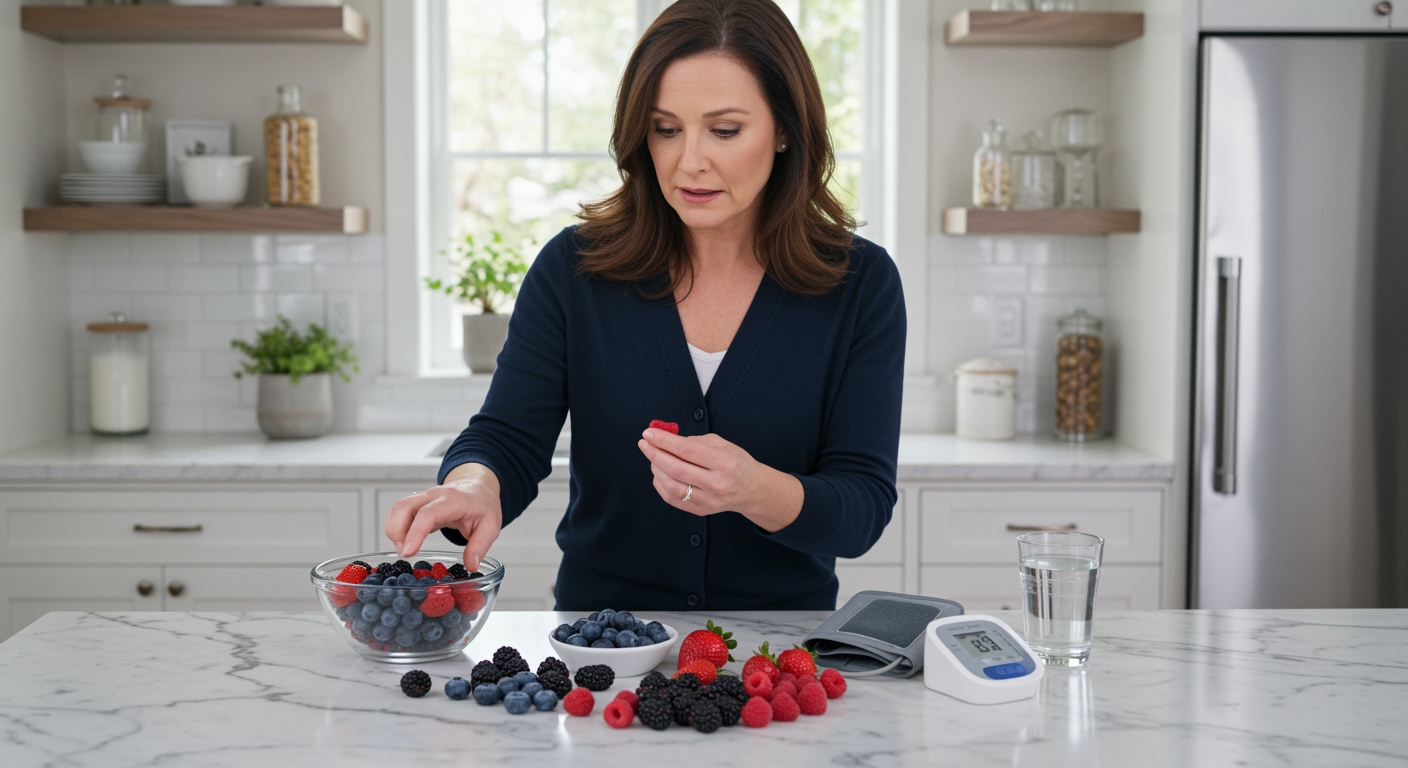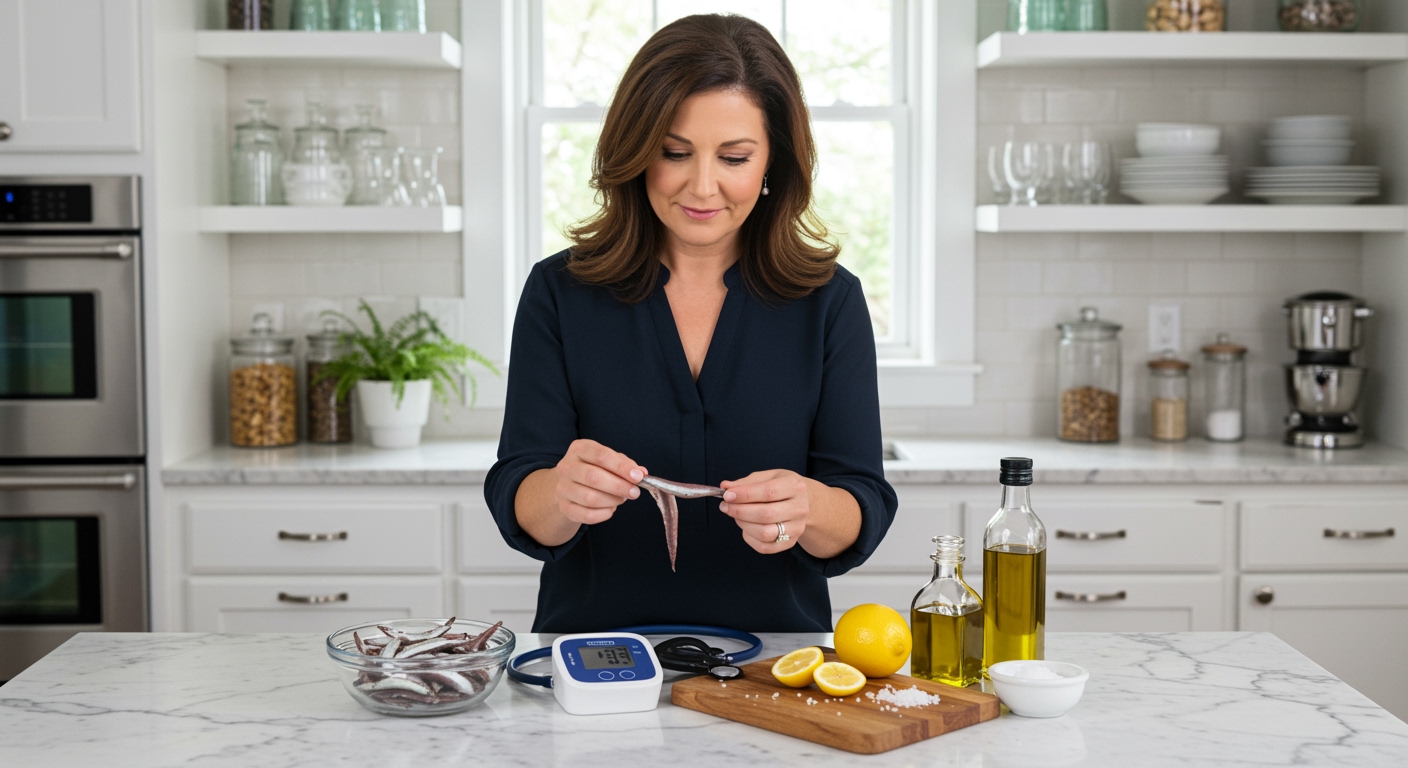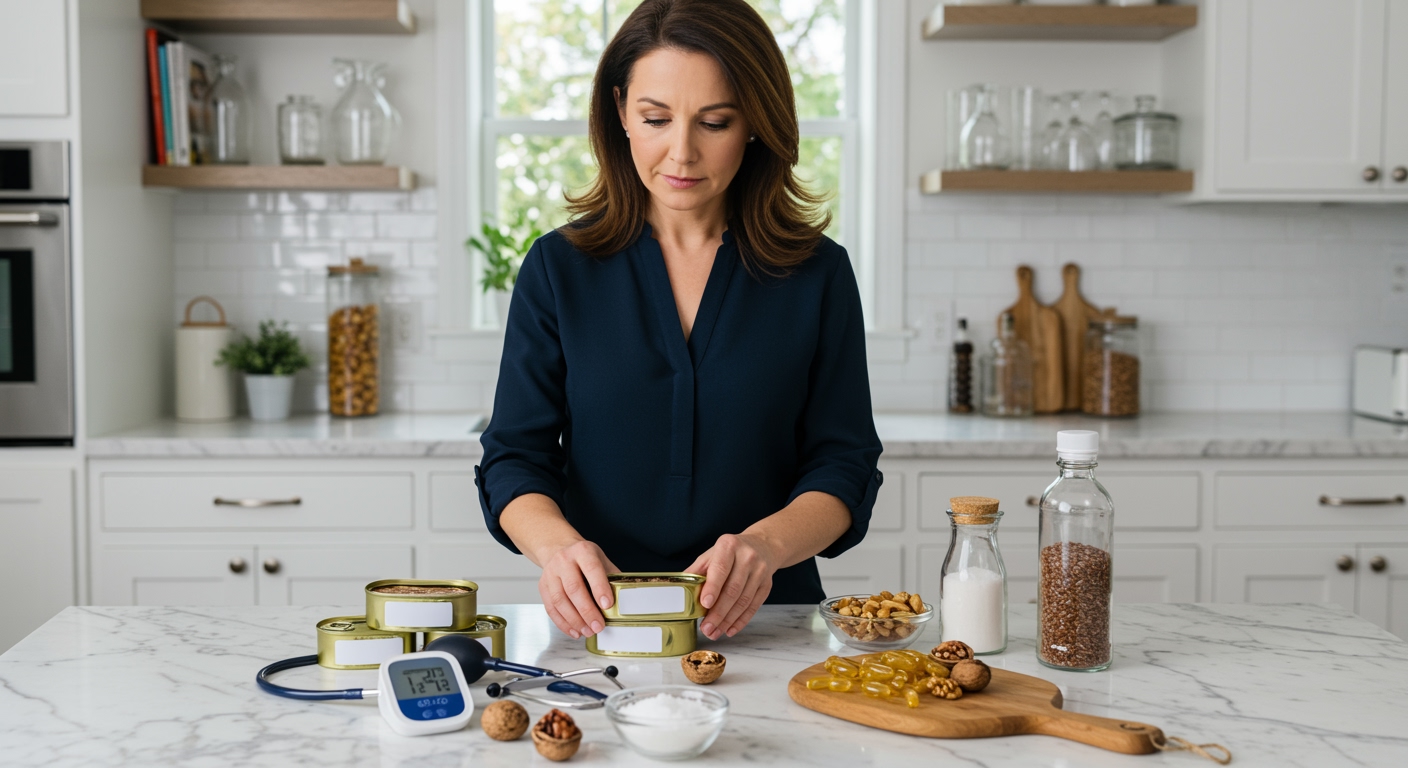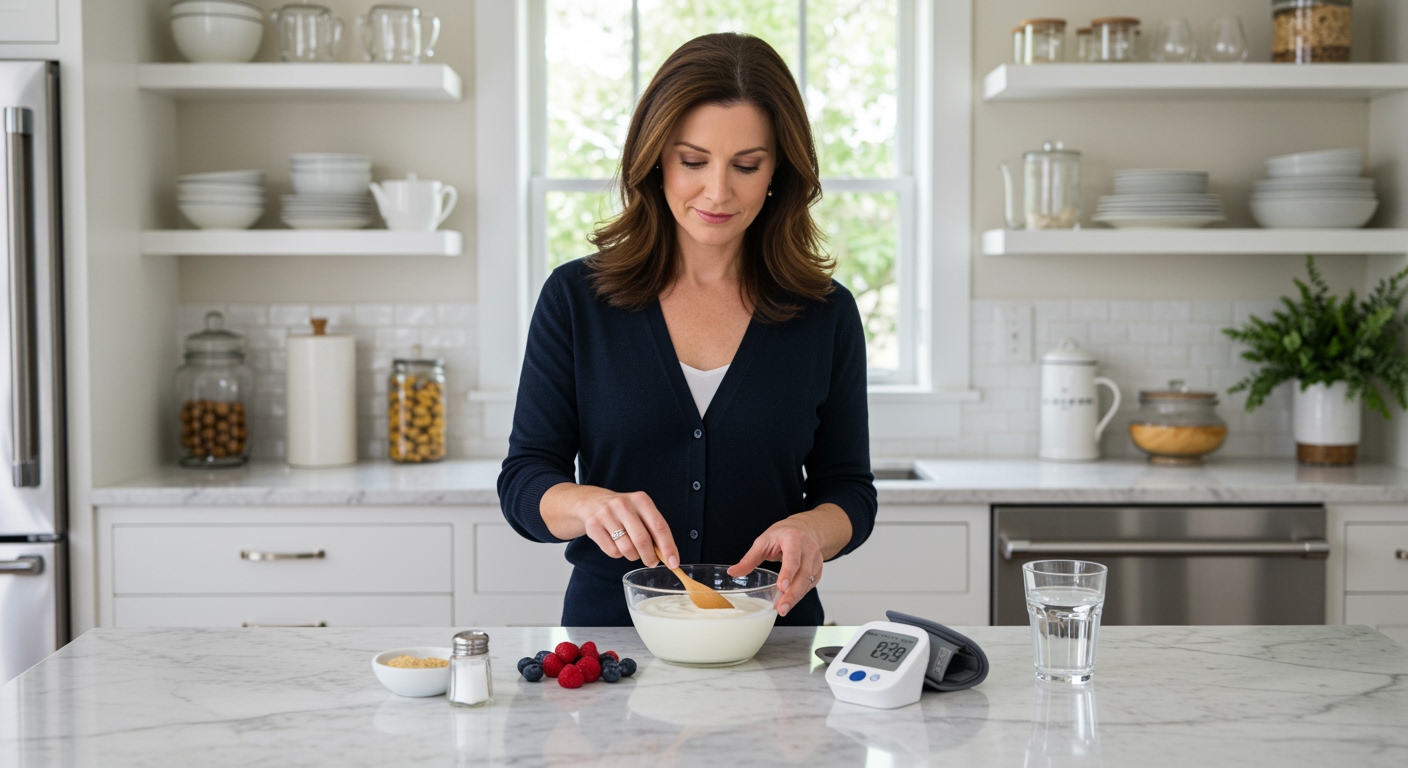✪ Key Takeaway: Berries can lower blood pressure through nitric oxide production, but they rarely cause dangerous drops in people with hypotension.
Introduction
Your doctor tells you to eat more berries for heart health, but you worry they might make your already low blood pressure even worse.
You might be asking this question because you have hypotension and want to know if berries will interfere with your efforts to raise your blood pressure naturally.
Hi, I am Abdur, your nutrition coach and today I am going to explain exactly how berries affect low blood pressure levels and whether you should be concerned.
How Do Berries Actually Lower Blood Pressure?
Berries contain powerful compounds called anthocyanins that give them their deep red, blue, and purple colors.
These anthocyanins work by increasing nitric oxide production in your blood vessels.
Nitric oxide acts like a natural vasodilator, which means it helps your blood vessels relax and widen.
When your blood vessels are more relaxed, your heart does not have to work as hard to pump blood through them.
This process naturally reduces the pressure against your artery walls, leading to lower blood pressure readings.
Research shows that people who eat berries regularly can see blood pressure reductions of 4-6 mmHg systolic and 2-3 mmHg diastolic within 8 weeks.
✪ Fact: Blueberries contain the highest concentration of anthocyanins among all commonly eaten berries.
Can Berries Make Low Blood Pressure Dangerous?
The blood pressure lowering effect of berries is generally mild and happens gradually over time.
Most people with hypotension have blood pressure readings below 90/60 mmHg, but berries are unlikely to push these numbers into dangerous territory.
The vasodilation effect from berries is much weaker than prescription blood pressure medications.
Your body also has natural regulatory mechanisms that prevent blood pressure from dropping too low from dietary sources alone.
However, if you take blood pressure medications and eat large amounts of berries daily, you might experience additive effects that could be concerning.
The key is moderation and monitoring how your body responds to different amounts of berry consumption.
✪ Pro Tip: Track your blood pressure for two weeks after adding berries to see your individual response pattern.
What Amount of Berries Is Safe for Hypotension?
Most studies showing blood pressure benefits use one cup of mixed berries per day or about 150 grams.
If you have low blood pressure, starting with half a cup daily allows you to gauge your body’s response.
Fresh berries tend to have a more concentrated effect than frozen ones because the freezing process can break down some anthocyanins.
Eating berries with protein or healthy fats can slow the absorption of their active compounds, potentially reducing any blood pressure effects.
You should avoid berry supplements or concentrated extracts if you have hypotension because these provide much higher doses of active compounds.
Spreading your berry intake throughout the day rather than eating them all at once also helps minimize any sudden blood pressure changes.
✪ Note: Berry juice concentrates can have 3-5 times more anthocyanins than whole berries, so avoid these if you have hypotension.
Which Berries Have the Strongest Blood Pressure Effects?
Blueberries and blackberries contain the highest levels of anthocyanins and show the strongest blood pressure lowering effects in research.
Strawberries have moderate anthocyanin content but also contain high levels of vitamin C, which supports nitric oxide production.
Raspberries provide good anthocyanin levels plus fiber that can help stabilize blood sugar and indirectly support blood pressure regulation.
Cranberries are extremely potent in anthocyanins, but most people consume them as sweetened products that may offset their benefits.
If you have hypotension, consider starting with strawberries or raspberries since they tend to have milder effects than blueberries or blackberries.
You can also mix different berries to get variety while keeping the total anthocyanin load manageable for your blood pressure levels.
✪ Fact: Darker colored berries generally contain more anthocyanins and have stronger blood pressure effects.
Should You Avoid Berries Completely With Low Blood Pressure?
You do not need to avoid berries completely if you have mild hypotension, especially if you are otherwise healthy.
Berries provide important antioxidants, fiber, and vitamins that support overall cardiovascular health beyond just blood pressure effects.
The key is finding the right balance between getting nutritional benefits and avoiding any problematic blood pressure drops.
If your hypotension causes symptoms like dizziness or fatigue, you should be more cautious about berry intake and monitor closely.
People with severe hypotension or those taking medications should consult their healthcare provider before adding significant amounts of berries to their diet.
Remember that the blood pressure effects of berries are usually temporary and your levels will return to baseline within 6-8 hours after eating them.
The Bottom Line
Berries can lower blood pressure through their anthocyanin content, but the effect is usually mild and unlikely to cause dangerous drops in people with hypotension.
Smart nutrition means understanding your individual response rather than avoiding beneficial foods out of fear.
I would love to hear about your experience with berries and blood pressure in the comments below, or if you have any questions about managing hypotension through diet.
References
At NutritionCrown, we use quality and credible sources to ensure our content is accurate and trustworthy. Below are the sources referenced in creating this article:
- PMC: Anthocyanins and Blood Pressure
- PubMed: Berry Consumption and Cardiovascular Health
- Harvard Health: Blueberries May Help Lower Blood Pressure
- Blood Pressure UK: Berries Bacteria and Blood Pressure





